Purchasing behavior around the world is changing; consumer buying patterns have strayed way beyond what we consider normal. As fear of the implications surrounding COVID-19 gained momentum, consumers started stockpiling “essential” supplies. Then came another transition, to purchasing long-lasting “emergency” supplies, including frozen foods and pantry items with a longer shelf life.
WATCH NOW
At the same time, we’ve also witnessed the stock market decline, the implementation of travel bans, and growing concerns around the viability of the supply chain and both safety and availability of labor — all of which cause a great deal of economic uncertainty. Add in large-scale changes to where and how we’re working because of shelter-in-place, social distancing, and self-quarantine rules, and you’ve got a perfect storm for very high media consumption.
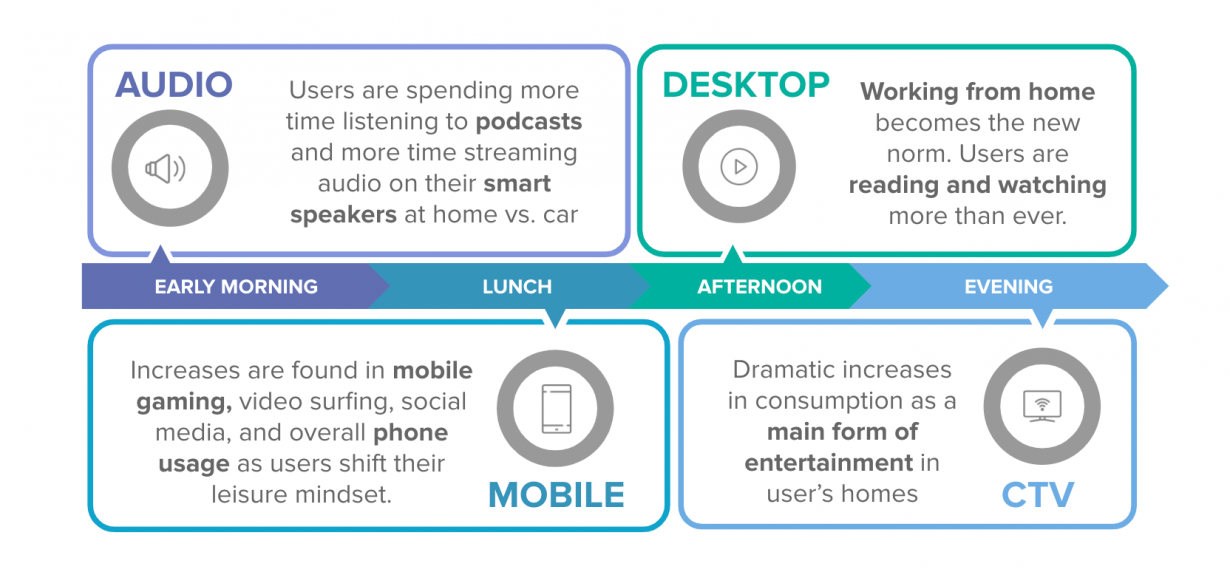
And that means your programmatic ad buying strategy needs to be smart, efficient, and agile to make the most of the situation.
Let’s start with some context.
How is coronavirus affecting what consumers are actually doing when they’re online?
At the beginning of March, according to an NRG survey, just 24% of people felt that the coronavirus was affecting what they did in their spare time; just two weeks later, by March 16th, that number had increased to 71%.
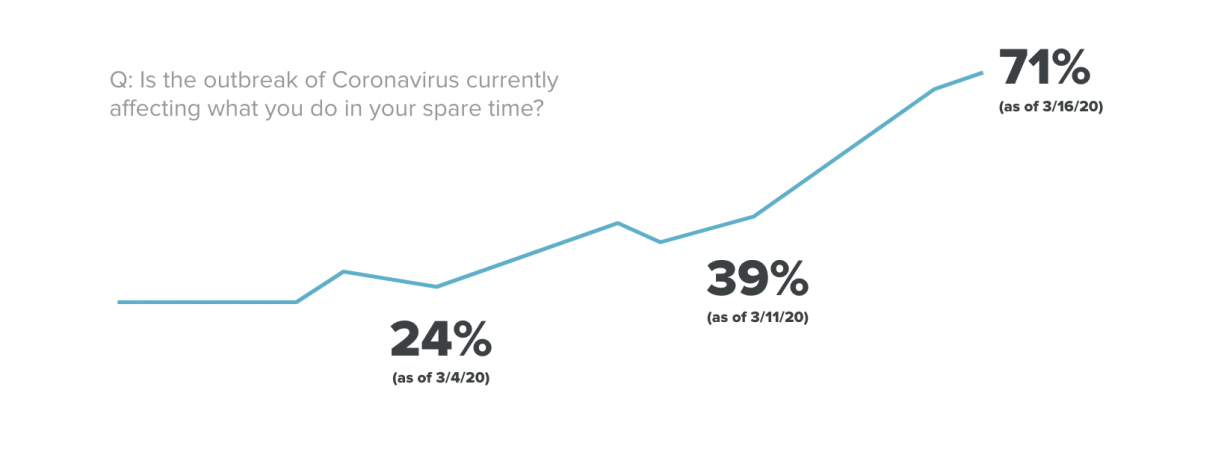
This self-reporting of a massive change in behavior represents both a potential challenge for marketers and an opportunity. Serving ads for the right products or services, adapting marketing messaging and creative to speak to what people need right now, and meeting customers where they are all imperative to succeed. And what success looks like is also changing; brands not only need to be more customer-focused than ever, they must focus on earning customer affinity and building long-term relationships with customers through this crisis by being responsive and empathetic.
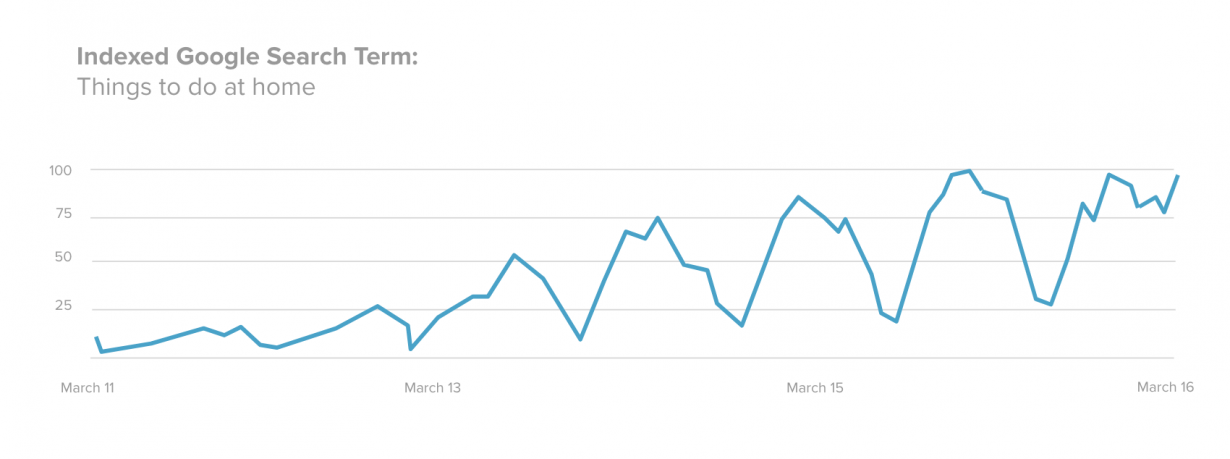
Empathy means understanding and responding to the new reality for customers; for example, Google reported a rapid increase in searches related to “things to do at home”, so consider what your brand can do to provide content, products, or services that speak to that need. You also may need to adapt your ads to other changes in behavior like the increase of mobile internet usage: hours spent on the mobile internet increased from 6.1 in January to 7.3 in March once self-quarantine was underway according to eMarketer.
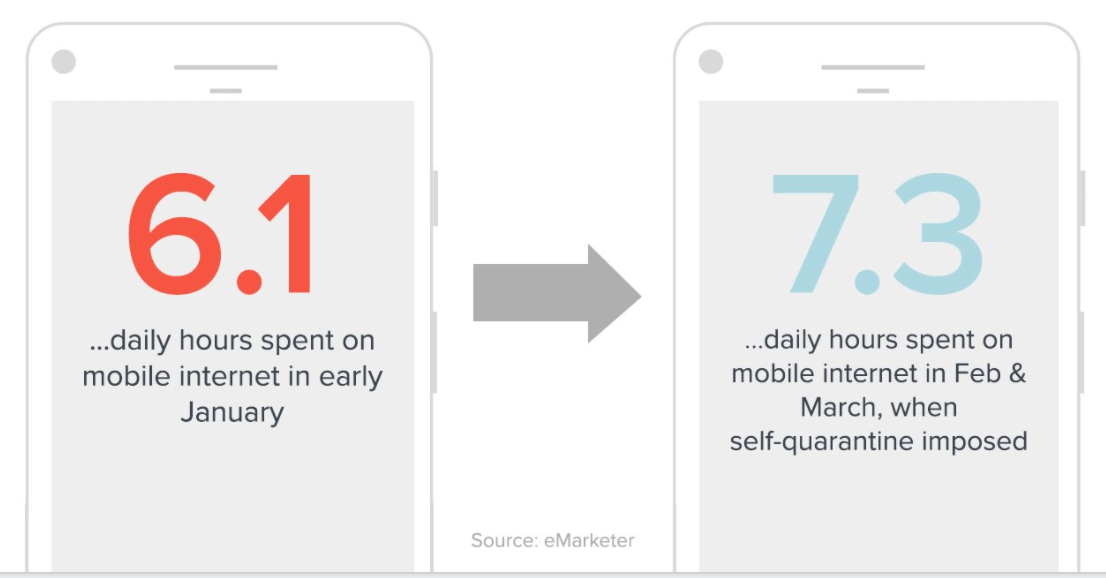
Before coronavirus, there was no doubt that people spent a lot of time searching, wishlist-ing, and buying. We exist in a generation of immediate access to just about anything and everything — but the virus, as it distances us from people, has put us in much closer, more constant contact with our hobbies, favorite products, binge-worthy shows, and more.
The proof is in the pudding (or the numbers):
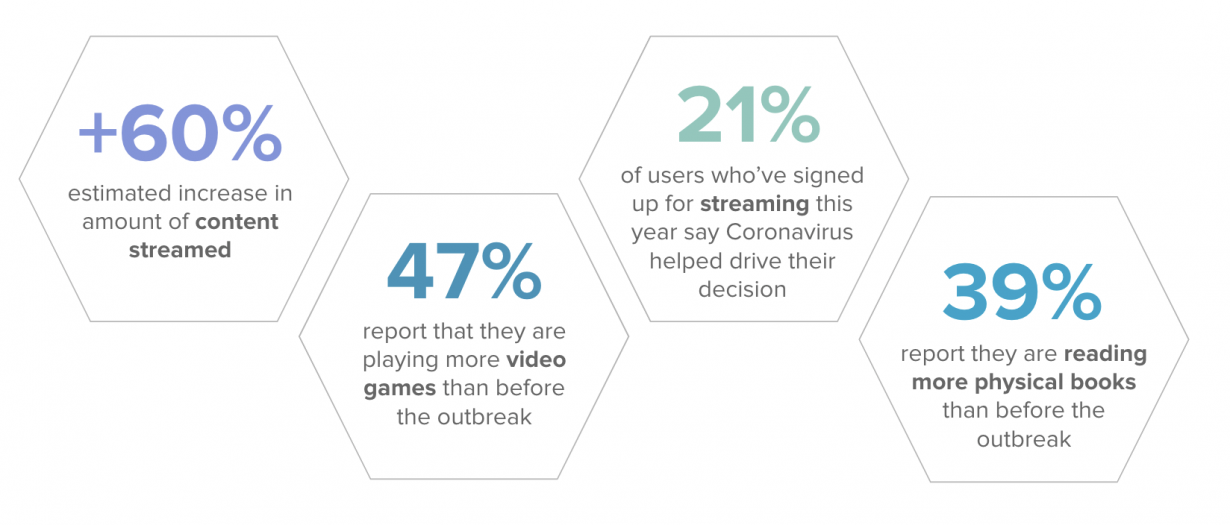
Social distancing policies have also negatively impacted a couple of advertising channels, namely sharp decreases in out-of-home and traditional radio ad spend.
That may free up some dollars to take advantage of other opportunities. Users are spending more time listening to podcasts, streaming music on their at-home speakers, consuming both educational and entertaining content on desktops and phones, and turning the dial once again on their TVs — something media spenders should take note of.
What are some successful things brands are doing to make the most of this situation?
Consumer’s experiences with brands in this difficult time will likely impact their opinion of and likelihood to purchase from the brand long past the end of the pandemic.
Some commonalities shared by successful brands during the outbreak:
- Swift, empathetic engagement with the appropriate tone.
- Transparency in fulfillment and decision-making.
- Native digital experience that is easy to navigate.
- Consumer value-ads.
- Clear commitment to your brand values.
Making sure your brand is prioritizing being helpful and empathetic no matter the channel or touchpoint helps build positive consumer sentiment, which in turn builds that long-term brand affinity that will lift your brands results across the board over time. There are five principles you should be using to guide your media strategy– and the questions you should be asking before launching every campaign:
- Context Always: Is this campaign right, given the current context in a local market?
- Constantly Reassess: Though we greenlit this campaign last month/last week/yesterday, is it still right for the context and moment?
- Creative Considerations: Are all of the creative elements — tone, copy, visuals, keywords, placements — appropriate and relevant to this new reality?
- Changing Priorities: What are the most relevant brands, products, or campaigns our media can support right now, and do we need to shift budgets?
- Opportunity to Contribute: What ways can our brand — and even our owned media channels — be helpful to people and businesses in this moment of need?
Let’s dig a little deeper into how we figure out how to navigate those changing priorities.
What are the most relevant brands, products, campaigns, or channels our media can support right now, and do we need to shift budgets?
The shifts that are occurring because of the coronavirus are going to have long-lasting implications; brands that are waiting for everything will just go back to the old definition of normal are not doing themselves any favors. COVID-19 is accelerating a lot of trends that were already in motion before the virus hit, and smart shifts in your paid-media investment will help you efficiently and effectively break through to your audience in a time of social distancing.
Here are some specific opportunities your brand may be interested in taking advantage of:
Connected TV
One option is to drive an incremental lift in conversions via CTV/OTT. More and more people are utilizing connected TV systems now, so it makes sense to run video ads alongside popular TV shows when viewership is at an all-time high: Hulu, Sling, Roku, and more.
Your CTV/OTT ad strategy checklist:
- Apply lookalike modeling off sales & CRM data,
- Link CTV to other devices with IP-based attribution model
- Re-engage viewers within households across mobile
- Gain insight into who has been exposed to your ads
- Track purchase to users viewing your CTV commercials
- See users’ full path to conversion.
Audio
As the podcast industry booms, there’s an opportunity to deploy an entirely new audio ad experience, a more engaging and effective ad strategy across podcasts and digital audio that’s activated programmatically and delivers measurable results.
Your audio ad strategy checklist:
- Reach, engage, and measure each interaction
- Re-engage listeners across devices, smart speakers, and mobile
- Track purchase to users listening to your audio ads
- Use sequential messaging to tell an engaging story
- Leverage Haptic Tech like “Shake Me” for interactive experiences
- Always target your demographic and behavioral audiences
Video
The digital video ad market ― especially mobile video ― is growing in size and complexity. It’s being transformed by the merging of technological innovations and consumer behavior shifts. That means your brand can be at the cutting edge of this change and reach customers in a whole new way.
Your video ad strategy checklist:
- Reach users watching video on all screens at the same time and complement any existing display campaign
- Better understand cross channel attribution
- Use content to create immersive experiences
- Join forces and assist channels like paid and organic search and paid social
- Seize the opportunity to scale with 50+ video exchanges.
Display
- Everyone is reading a lot online these days, and you can connect with audiences with the right display ad strategy. Display will help you gather data that provides you with reports for on-site traffic, brand awareness, sales, and conversions, as well as serving as an overall health monitor of your brand.
Your display ad strategy checklist:
- Encourage the user to click through to a landing page
- Utilize messaging around taking an action online
- Get creative and serve animated ads that are visually appealing
- Make sure to measure your display results in real-time.
- Always optimize creative, audiences, and engagement
How should you measure success?
We are in a new world of ambient media in which consumers at home are swimming in communications, and spending more time than ever before in front of connected TVs, on cell phones and tablets and laptops, and just generally plugged in digitally. Marketers who have relied too much on digital click data will need to reevaluate integrated campaign measurement. Adjusting your short-term KPIs will help your brand achieve sustainable, long-term results.

It’s important to understand what to invest in and be flexible at this time. If sales are softening, you might find that your customer lifetime values have declined, suggesting the need to reinvest in customer acquisition spending with re-vamped messaging to lend a hand back into your branding. With greater uncertainty from actively seeking or loyal customers, you might even want to consider lowering the bar on ROI for marketing spend.
Check out the on demand version of our latest virtual event, From Crisis Reactive to Recovery Proactive, featuring brand leaders from brands like Whirlpool and Nitro, to learn more about how your brand can stay effective during the pandemic.






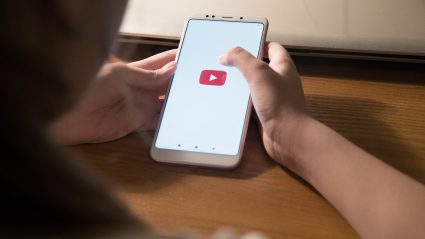
Responses